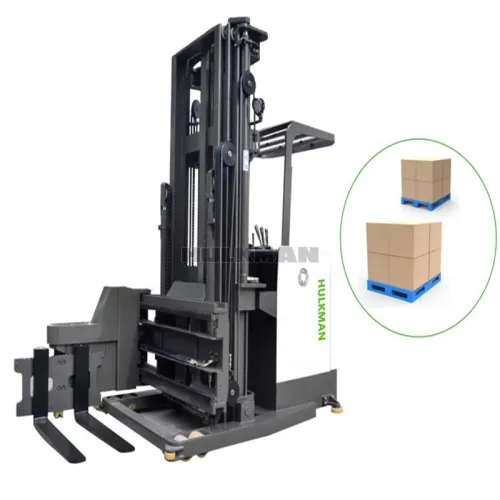U.S. warehouse operators have increasingly adopted AGV forklifts to streamline intralogistics, reduce labor dependency, and improve safety. However, a growing number of logistics managers are now questioning their actual impact. Are these high-tech solutions quietly introducing delays instead of delivering promised efficiency? The concern is not isolated—delays, integration challenges, and inconsistent performance metrics have surfaced across various sectors, from e-commerce fulfillment centers to cold chain facilities.
With companies investing heavily in warehouse automation, understanding where and why AGV forklifts may cause hidden slowdowns has become a pressing issue.
One key problem arises when AGV forklifts operate in dynamic environments that require human-machine collaboration. While they excel in repetitive and pre-mapped routes, their performance often drops in high-traffic, rapidly changing zones—like cross-docking areas or seasonal warehouses. In the U.S., where just-in-time inventory models dominate, even minor timing discrepancies can ripple through the supply chain.
Comparatively, traditional forklifts—while labor-intensive—still offer quicker decision-making in unpredictable scenarios. Human drivers can adapt on the fly; AGVs must re-route or pause, leading to micro-delays that accumulate over hours and shifts. In industries like food distribution, where compliance with cold-chain timelines is critical, these pauses can translate into product quality risks.
Many U.S. warehouses run on a mosaic of systems: WMS (Warehouse Management System), TMS (Transportation Management System), and ERP platforms. AGV forklifts rely heavily on seamless communication with these systems to function optimally. But integration is rarely flawless. Data latency, mismatched protocols, and software incompatibilities often prevent real-time task allocation and feedback loops.
European facilities that have adopted Industry 4.0 standards typically have more unified protocols, which allow AGVs to perform better. In contrast, the fragmented tech ecosystems common in mid-sized American warehouses lead to AGVs idling between tasks or waiting for updated instructions. These dead zones create the perception—and reality—of inefficiency.

Warehouses upgrading to AGV forklifts often underestimate the need for infrastructure tuning. Uneven floors, insufficient sensor reflectors, and inadequate charging zones can disrupt the autonomous flow. Unlike traditional forklifts, AGVs depend on precise spatial and digital cues. Maintenance delays—especially in facilities without dedicated automation teams—can also lead to extended downtimes.
In fact, many warehouse managers report more frequent calibration and troubleshooting requirements with AGVs compared to their manual counterparts. A recent survey by the U.S. Material Handling Institute found that 38% of AGV users cited “system complexity and downtime” as a top concern—more than double the rate from five years ago.
The experience of integrating AGV forklifts echoes similar adoption patterns in other automation tools. For instance, U.S. manufacturers implementing AGV Forklifts in metal forming lines have faced comparable learning curves. These robotic arms, while capable of complex motion and high-speed precision, underperform when not supported by proper programming and system-wide synchronization. The parallel shows a deeper pattern: advanced equipment needs more than installation—it needs holistic planning and operational alignment.
By learning from early AGV adopters and the robotics experience in other sectors, warehouse operators can avoid repeating the same mistakes: underestimating the support infrastructure, undertraining staff, and ignoring the need for ongoing optimization.
Agv pallet trucks are not inherently flawed—they are powerful assets in the right conditions. But when deployed in unprepared or fragmented environments, they can quietly erode productivity through hidden delays. U.S. warehouses must shift focus from just adopting automation to adapting their operations for it.
By prioritizing better system integration, infrastructure readiness, and continuous workforce training, warehouse leaders can ensure AGVs deliver real value. Otherwise, as with the case of 3D stamping manipulators in industrial lines, the technology may look impressive on paper but underperform in practice.

Comments
0